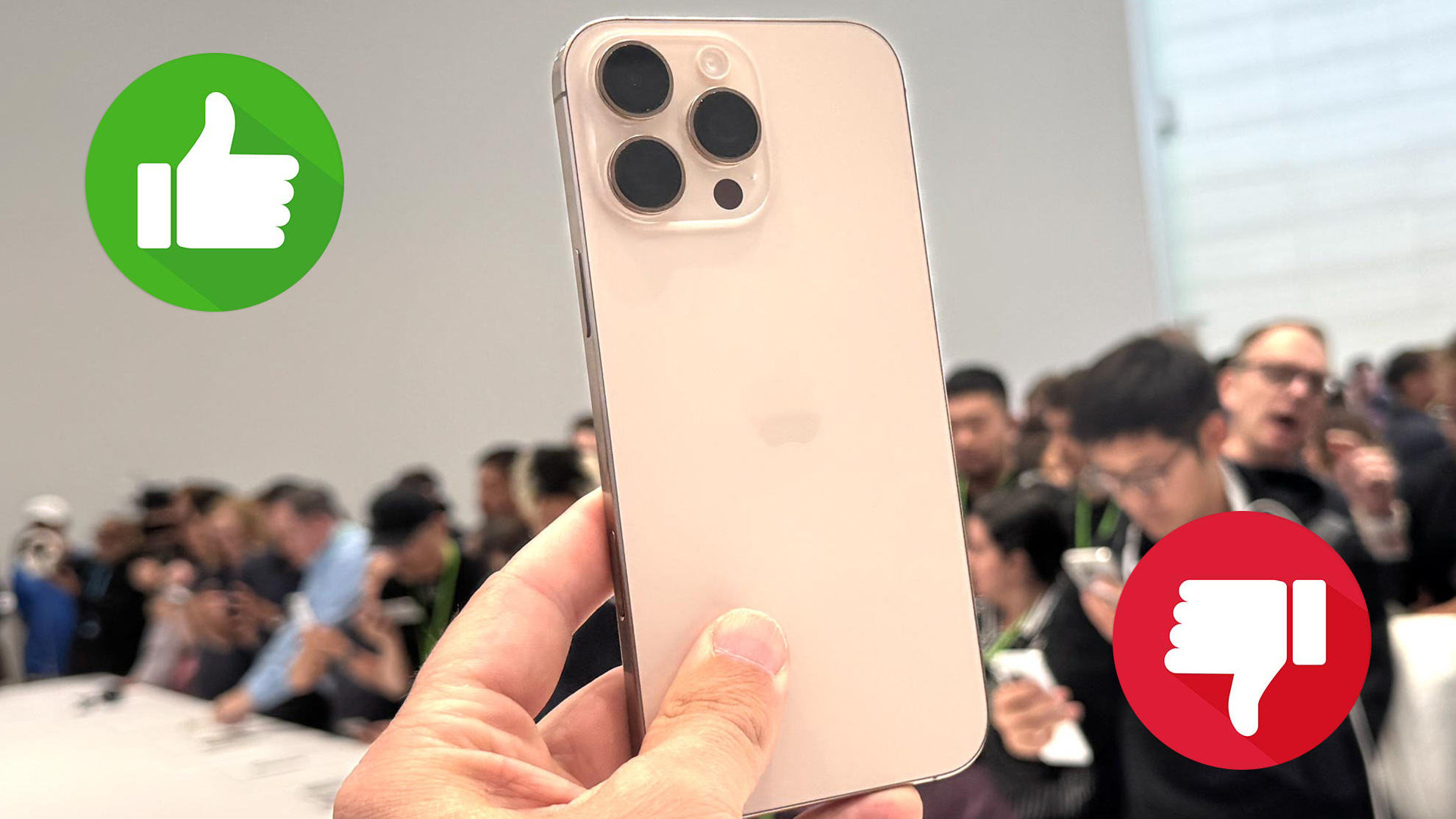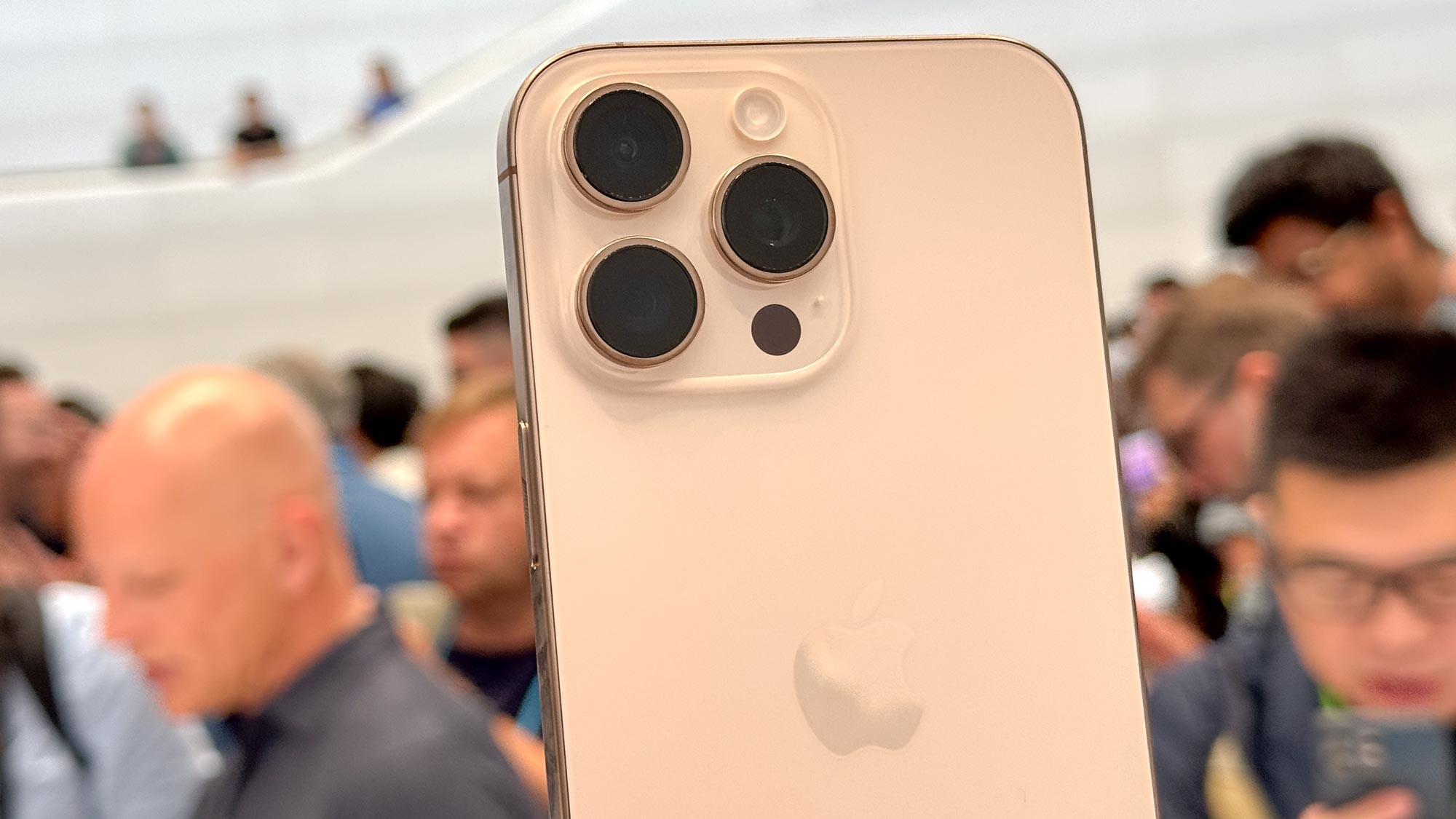iPhone 16 Pro — 7 reasons to upgrade and 3 reasons to skip
The new Pro models impress, but should you upgrade?

Apple tends to save its biggest upgrades for its Pro phones, and this year's iPhone 16 Pro models are no exception. From bigger screens to overhauled camera hardware, both the iPhone 16 Pro and iPhone 16 Pro Max pack in a number of enhancements — and that's before we even consider the Apple Intelligence features coming via a software update next month.
The new phones certainly make a good first impression as you can see in our iPhone 16 Pro and iPhone 16 Pro Max hands-on. But should you really commit $999 or more to buying either phone once iPhone 16 pre-orders begin on September 13?
Because we've spent some time with both iPhone 16 Pro models after attending Apple's launch event, we have some insight on what's appealing about the new phones and where they don't impress as much. Here's why you should consider buying the iPhone 16 Pro, along with a few reasons why you might want to give this year's update a pass.
iPhone 16 Pro: Reasons to buy
More screen space

If you believe that bigger is better, you're going to get a kick out of the iPhone 16 Pro and iPhone 16 Pro Max, which now feature respective screen sizes of 6.3 inches and 6.9 inches. That latter size is the biggest ever screen offered on an iPhone.
Those new screen sizes build upon the 6.1- and 6.7- inch panels that Apple has used on its Pro models for years. However, the boost in screen space hasn't meant a corresponding increase in size, since Apple also shrunk the bezels around the display to free up more room. As a result, the iPhone 16 Pro is only 0.12 inches taller and 0.03 inches wider than its predecessor. The increase in iPhone 16 Pro Max dimensions is similarly modest.
Big camera changes

Cameras are one of the most important feature on any phone, and Apple made sure that the ones on the iPhone 16 Pro models got plenty of attention. In the case of the iPhone 16 Pro, specifically, every lens undergoes some sort of improvement.
The biggest change involves the iPhone 16 Pro's telephoto camera, which adopts the tetraprism design Apple introduced with the iPhone 15 Pro Max. As a result, the iPhone 16 Pro now offers a 5x optical zoom matching what the Pro Max model can do.
Changes to the main camera and ultrawide camera affect both new models. Apple now uses a new Fusion sensor for the main camera, with the primary benefit being a faster shutter speed since the sensor can read data faster. Meanwhile the ultrawide lens gets a boost from a 12MP sensor on older iPhone Pros to a 48MP sensor here, which should result in more detailed photos.
iPhones typically rank high among the best camera phones, and you'd have to imagine that the iPhone 16 Pro stands a good chance of joining that list if the improved camera hardware delivers the promised benefits.
Better video capture

Anyone whose job or hobby centers around video production won't have to think too long about whether to upgrade to the iPhone 16 Pro. Apple made a number of changes to the video capture capabilities of its iPhone 16 Pro models that should make life a lot easier on videographers.
You can now shoot 4K 120fps video in HDR at either full speed or in slow motion with the iPhone 16 Pro. And you'll be able to adjust video speeds after the fact, just like you can adjust the background blur on a portrait shot.
On the audio front, the iPhone 16 Pro sports four mics for capturing spatial audio when you're recording video. An Audio Mix feature lets you adjust sound to emphasize the person in the shot or amplify any background noise.
My colleague Jeff Parsons calls the iPhone 16 Pro a game-changer for video capture, and when you consider all of the features Apple has added to this year's Pro models, that may be underselling it.
Greater flexibility with the Camera Control button

We're not done talking camera features, as Apple added a new Camera Control button across the iPhone 16 lineup. It provides an easier way to launch the Camera app and capture photos and videos — just press the button on the side of the phone to activate the camera and press it again to take a photo.
Pro phone users will appreciate the ability to control the telephoto lens zoom with a light press of the Camera Control button. A double light press lets you toggle between different camera settings like exposure or depth of field, adjusting those with a slide. And Apple promises a software update later this year to automatically lock focus and exposure from the Camera Control button to let you reframe the shot without losing focus on your subject.
Mastering the different presses and swipes might involve a learning curve, as Mark Spoonauer learned in his Camera Control hands-on time. But it's a promising addition that figures to give mobile photographers more flexibility in how they operate the iPhone 16 Pro's cameras.
Improved A18 Pro performance

A new round of iPhone updates means a new chipset running the show, and it sounds like the A18 Pro inside the iPhone 16 Pro models could be quite formidable. It's got an extra core in its GPU compared to the A18 system-on-chip in the standard iPhone 16, so the Pro models should deliver better performance in graphically intensive apps.
Apple promises a 15% faster CPU and 20% faster GPU compared to last year's iPhone 15 Pro. The speed gains should be even more pronounced if you're upgrading from an older iPhone. The A18 Pro is also more power efficient, too, which should help the iPhone 16 Pro models deliver better battery life than before — a bold claim considering how long the iPhone 15 Pro Max lasts on a charge.
There's also a 16-core neural engine that's a part of the A18 Pro silicon, which helps run all those Apple Intelligence features Apple's planning to add via a software update. Because of all that computing power, the bulk of Apple's AI-driven features will be contained on your phone, keeping that data safe from prying eyes.
Better durability

We take it for granted that iPhones are built to last, thanks to factors like an IP68 water-resistance rating that keeps Apple's handsets safe from water damage at up to 6 meters for 30 minutes. But Apple made specific changes to the iPhone 16 models to further keep them out of harm's way.
Specifically, the Ceramic Shield on the new iPhones has gotten an update, with Apple saying this latest-generation version of its protective coating is 50% tougher than before. When you're paying iPhone Pro prices for your smartphone, you definitely want one that's more likely to survive a tumble.
No price hikes

A year ago, Apple boosted the price on its Pro Max model by $100, setting off an unfortunate trend among the top phone makers. Samsung enacted a similar price hike for the Galaxy S24 Ultra, while OnePlus and Google upped the cost of some of their top flagships, too.
At least Apple is breaking the cycle of higher prices with the iPhone 16 release. Both the iPhone 16 Pro and iPhone 16 Pro Max have the same starting prices as last year's models, which is incentive enough to jump on the upgrade train.
iPhone 16 Pro: Reasons to skip
Lackluster charging speed changes

Let's start with some good news. The new iPhones now support 25W MagSafe charging, which is an improvement over previous models. That's a positive change, even if you wind up having to buy a new MagSafe accessory to take advantage of those improved speeds.
Less positive? Wired charging speeds remain at 20W, where they've been stuck since the iPhone 12.
We say this a lot whenever there's a new iPhone launch, but it's only because it remains true — at a time when Android makers offer super-fast charging speeds to making topping off batteries a snap, the iPhone continues to live life in the slow lane, even after making the switch from a Lightning port to USB-C. Perhaps one day Apple will get around to improving wired charging for its phones, but the iPhone 16 release day is not that time.
Still 128GB of storage in the iPhone 16 Pro base model

Putting Pro in a product's name introduces certain expectations, one of which is the belief that you should get ample amounts of storage in your premium device. The iPhone 16 Pro Max delivers on this front, with a 256GB capacity for its $1,199 starting price, maintaining a change Apple made with last year's model.
In contrast, the iPhone 16 Pro still starts with 128GB of capacity — which seems paltry when considering the $999 Apple demands for this model.
It doesn't help that adding storage doesn't come cheaply at Apple. You'd have to pay an additional $100 to bump up the iPhone 16 Pro's capacity to 256GB. Contrast that with the Galaxy S24, where upgrading from the 128GB base model to a 256GB version costs a mere $60. (You don't have to worry about such an upgrade with the Galaxy S24 Plus — the $999 version comes with the 256GB of storage Apple should include on its Pro model.)
Apple Intelligence features will need some work

We can't give a definitive verdict on Apple Intelligence features just yet, because outside of a developer beta, they don't exist yet. Apple's not going to make them available to all users until an October software update. So one of the marquee additions to the iPhone 16 Pro will be missing in action when the phone goes on sale September 20.
That's less of a concern if you view Apple Intelligence as a welcome, if not necessarily vital, addition to your smartphone. But if the promised AI features are your primary reason to consider an upgrade, you might want to hold off on the iPhone 16 purchase until you see just how polished the new features are. That could mean waiting a few months or as long as a full year, at which time the iPhone 17 models will be arriving.
iPhone 16 Pro outlook
There's definitely a lot to like about the iPhone 16 Pro and iPhone 16 Pro Max, particularly if you're most interested in things like camera performance and battery life — two of the main drivers of whether to get a new phone. We need to complete our iPhone 16 Pro testing, but on paper, the new models look like they'll deliver solid photos and last a long time on a charge. And they'll do at that with a bigger screen.
It's Apple Intelligence that figures to be the biggest thing standing in the way of an easy upgrade decision — not because the AI features don't look impressive. We've certainly like what we've seen from demos, but we don't know how that will translate into real-world use. And that uncertainty may be enough to convince some would-be upgraders to press pause for now.
More from Tom's Guide
Sign up to get the BEST of Tom's Guide direct to your inbox.
Get instant access to breaking news, the hottest reviews, great deals and helpful tips.
Philip Michaels is a Managing Editor at Tom's Guide. He's been covering personal technology since 1999 and was in the building when Steve Jobs showed off the iPhone for the first time. He's been evaluating smartphones since that first iPhone debuted in 2007, and he's been following phone carriers and smartphone plans since 2015. He has strong opinions about Apple, the Oakland Athletics, old movies and proper butchery techniques. Follow him at @PhilipMichaels.


